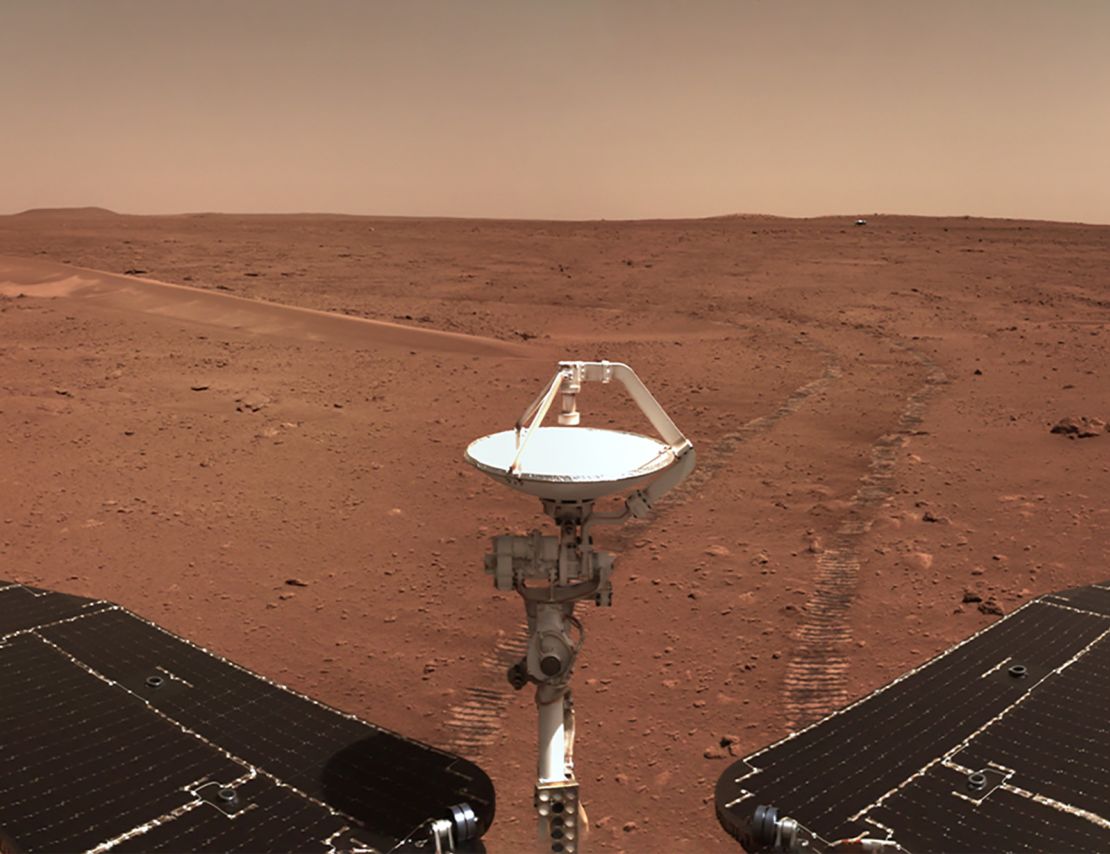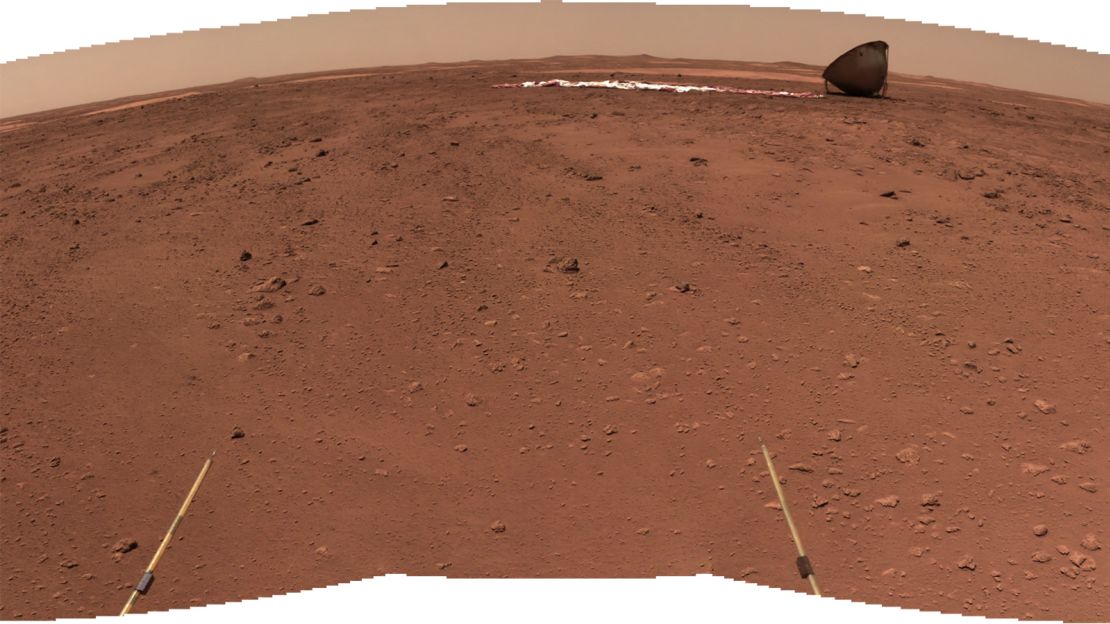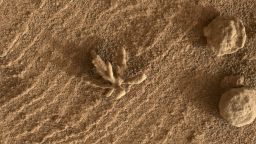Sign up for CNN’s Wonder Theory science newsletter. Explore the universe with news on fascinating discoveries, scientific advancements and more.
China’s Zhurong rover has found evidence suggesting that water persisted on Mars for much longer than expected.
Zhurong landed in a large plain in Mars’ northern hemisphere called Utopia Planitia on May 15, 2021 – where NASA’s Viking 2 lander touched down in 1976.
The rover’s primary mission, which lasted for three months, was to search for signs of ancient life. It has investigated the minerals, environment and distribution of water and ice in the plain, which is all part of the largest impact basin in the Martian northern lowlands. The rover continues to explore its landing site and send information back to the Tianwen-1 orbiter circling the planet.
Data returned from the rover’s initial survey of the basin suggests that the Utopia Planitia basin contained water during a time when many scientists believed Mars to be dry and cold.
A study detailing the findings published Wednesday in the journal Science Advances.
A changing planet
Mars was once warm and wet billions of years ago, but something changed and caused the planet to become the arid, frozen desert it is today. The red planet entered this period during what is called the Amazonian epoch, which began about 3 billion years ago and remains ongoing.
“The most significant and novel thing is that we found hydrated minerals at the landing site which stands on the young Amazonian terrain, and these hydrated minerals are (indicators) for the water activities such as (groundwater) activities,” said lead study author Yang Liu, a researcher at the Chinese Academy of Sciences’ State Key Laboratory of Space Weather and the academy’s Center for Excellence in Comparative Planetology.
The researchers analyzed the Zhurong rover’s data about the sediments and minerals found in the basin as well as the analysis performed by several of the rover’s instruments of its surroundings. They found hydrated silica and sulfates, similar to hydrated minerals discovered by other missions studying different regions of the red planet.

The minerals were contained within bright-toned rocks, where colors help showcase their composition. The researchers determined that these rocks at the landing site make up a layer of duricrust. This type of layer can form when a substantial amount of water, either rising groundwater or melting subsurface ice, basically turns the soil into a hard crust once the water evaporates.
The discovery of this duricrust layer, which is thicker than duricrust likely formed by atmospheric water vapor found at other Martian landing sites, suggests that Utopia Planitia had a more active water cycle tens of millions of years ago than scientists expected.
This adds to the increasing evidence discovered by Martian missions that the red planet went through cycles of being wet and warm, and dry and cold, rather than making one enduring, dramatic climate shift. These climatic ebbs and flows may have been the result of active volcanoes or impacts from other celestial objects, Yang said.
Fueling exploration
This discovery came as a surprise to researchers because orbiters’ previous observations didn’t uncover the signature of hydrated minerals in the landing site. It is why exploration using the rover was key, Yang said.
Utopia Planitia has been of interest to scientists because some speculate the region once hosted an ocean.
“So the discovery of hydrated minerals (has) significant indications on the geological and water history of the region and the climate evolution of Mars,” Yang said.
Yang said he hopes that the rover could analyze the layers of a crater in the plain to find more insights about the history of water in the region.

The findings also suggest that there could be “considerable stores” of water in the hydrated minerals or even ground ice, which future human explorers could use during crewed missions to Mars.
“One of the most important resources for human explorers is water,” Yang said. “Hydrated minerals, which contain structural water, and ground ice can be used as the important water resource on Mars.”







